MANAMA: Ramah Al-Husseini is a 31-year-old Saudi artist of Palestinian descent who lives in Bahrain. Her work has been shown widely in the region and overseas and she is particularly known for the use of flowers to represent sometimes-difficult subjects.
Al-Husseini says she has “been into art forever” and “always painting and drawing.” She studied art for her IB in high school and graduated from Concordia University in Canada with a Bachelor’s in Studio Arts Fine Arts.
On returning to Bahrain, she found an art scene that was heavily geared towards traditional, established artists so, in 2011, she decided to set up Anamil, a gallery showcasing her own work and offering a platform for other up-and-coming artists to display theirs. She has also curated shows for other venues, runs workshops and regularly donates her pieces to charity.
For the past several years she has been working on several projects based on the same concept. “I have been using flowers since 2011/2012, mostly desert flowers because I am from the Middle East,” she explains. “What fascinates me is that if you look out of your window here, there’s a lot of desert but, with just a bit of water, all of a sudden, there’s this beautiful greenery and flowers everywhere. So, it’s talking about the dead-looking desert and how something beautiful can come from a harsh environment.”
Through her surrealist floral images, she focusses on existing social pressures that can suppress truth and tackles a variety of other subjects in a bid to prompt discussion.
Here, Al-Husseini talks us through some of her favorite work.
‘Today’s Habit of Suppression for Convenience Becomes the Norm of Tomorrow’

This was part of an exhibition in Bahrain where I brought together five fellow artists working in various other fields, including performance and installation. The concept of this work is how we tend to limit ourselves mentally, either consciously or sub-consciously, because we want to fit in and are afraid that we don’t. There is a fear of not fitting in, even if we don’t actually want to. That’s something that not just I have struggled with but also family and friends. The people in the painting are a family. The older members are wearing traditional clothing and the red flowers on their heads are all one color, symbolizing fixed views. The son has a red palette and is painting out the new ideas in his own head to conform; he is using the paint as a source of limitation. In a way it’s about how we try to hide ourselves from our parents.
‘Heavily Comfortable’

This was a part of the same exhibition in Bahrain as “Today’s Habit…” The subject is comfortable in his position and the scissors provide the source of limitation. This time, he has some new thoughts in his head but, in his lap, you can see those he has cut off in order to stay comfortable with things as they are.
‘Breathing Space’

Also, part of the same exhibition dealing with how we limit ourselves in our eagerness to conform – but this one shows the opposite. He has many different ideas in his head in the form of flowers and is cutting those singular thoughts that would try to overwhelm him — cutting the approaching flowers to give space for his own thoughts. It’s about taking space for yourself.
‘A Thinker’s Guide to Thinking’
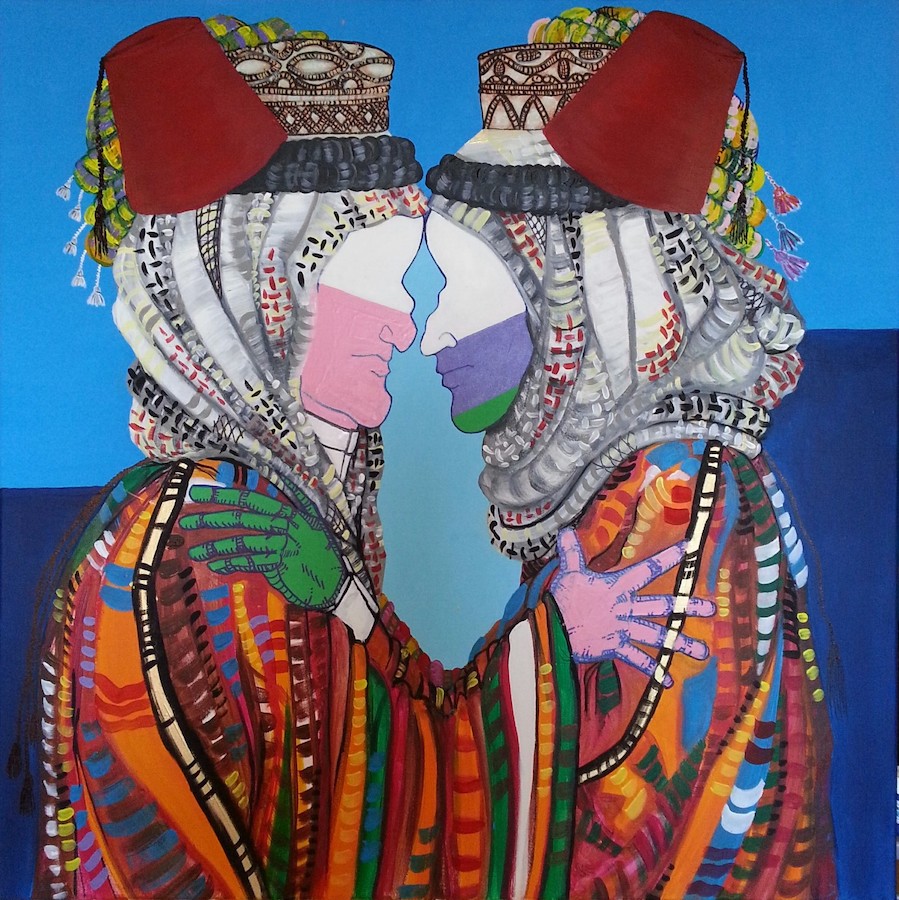
This was one of a set of pieces commissioned in 2014 for “Khaleejesque” magazine, which is published in Kuwait. They accompanied a piece written by Haider Al-Mosawi. The two men together show a traditional way of greeting (pre-Covid, obviously) in which they would stand shoulder-to-shoulder, their noses would touch and they would be cheek-to-cheek. This is the most respectful way of greeting in the GCC and what it is basically saying is, “We are equal.” The various headdresses denote that this is common to many Arabs regardless of their nationality and the multiple different colors illustrate that, as Arabs, we come in many different colors too.
‘Sense of Self’
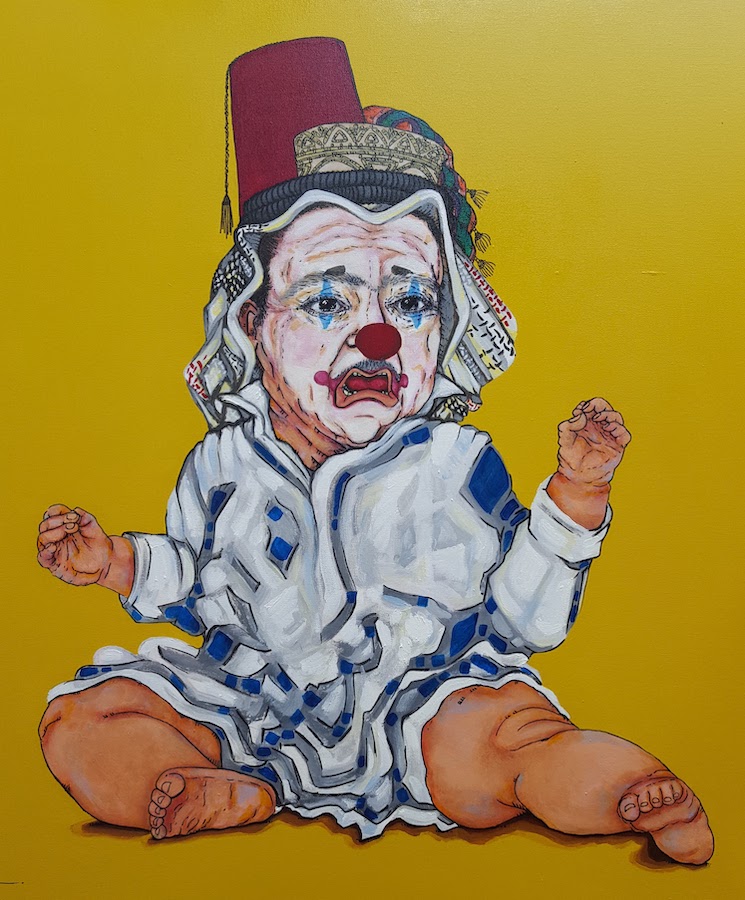
This piece was created in 2016, following all the upheaval in the Middle East. It’s a comment on that and on how I was feeling — it’s pretty literal. The old man is both a clown and a baby. We are crying because we feel helpless, like a baby, and the clown brings laughter but he’s crying and is not taken seriously. He’s wearing the traditional headdresses, as shown in some of my other pieces. I chose a man because, usually, if you want something done you might ask a man, but this man is both a crying baby and a clown. It was shown in Saudi, Bahrain and Oman as well as at the Underland Art Festival and is currently in Desert Design in Alkhobar.
‘Collision of Worlds’
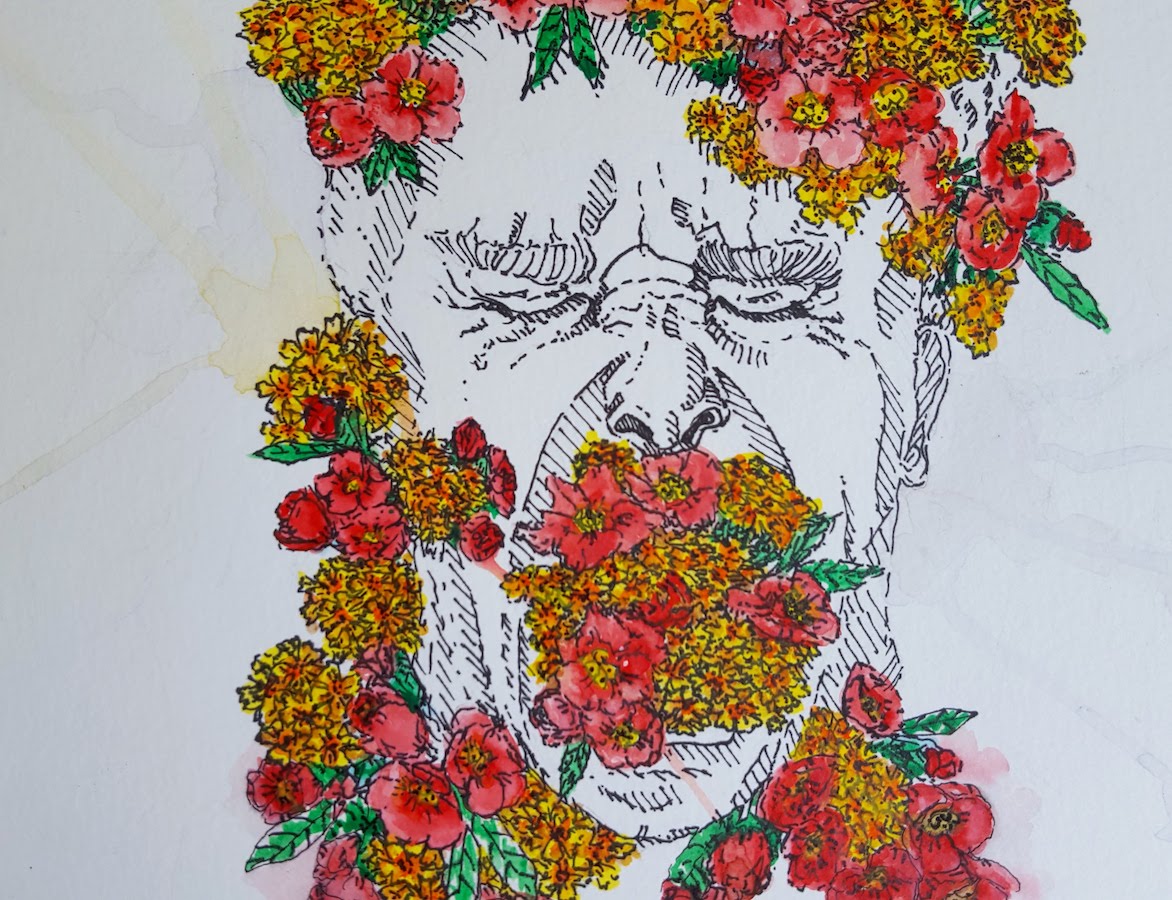
This 2018 piece is part of a set. There are two other pictures: One is a happy face which has red flowers, the other is a miserable face with yellow flowers. One was commenting on the other — the new things that you learn; that’s the happy red flowers. The yellow talks about the things that you were born into: culture, religion, community, family. The final piece, shown here, talks about the struggle with both and the collision of the two worlds.
‘Me, Myself and I’
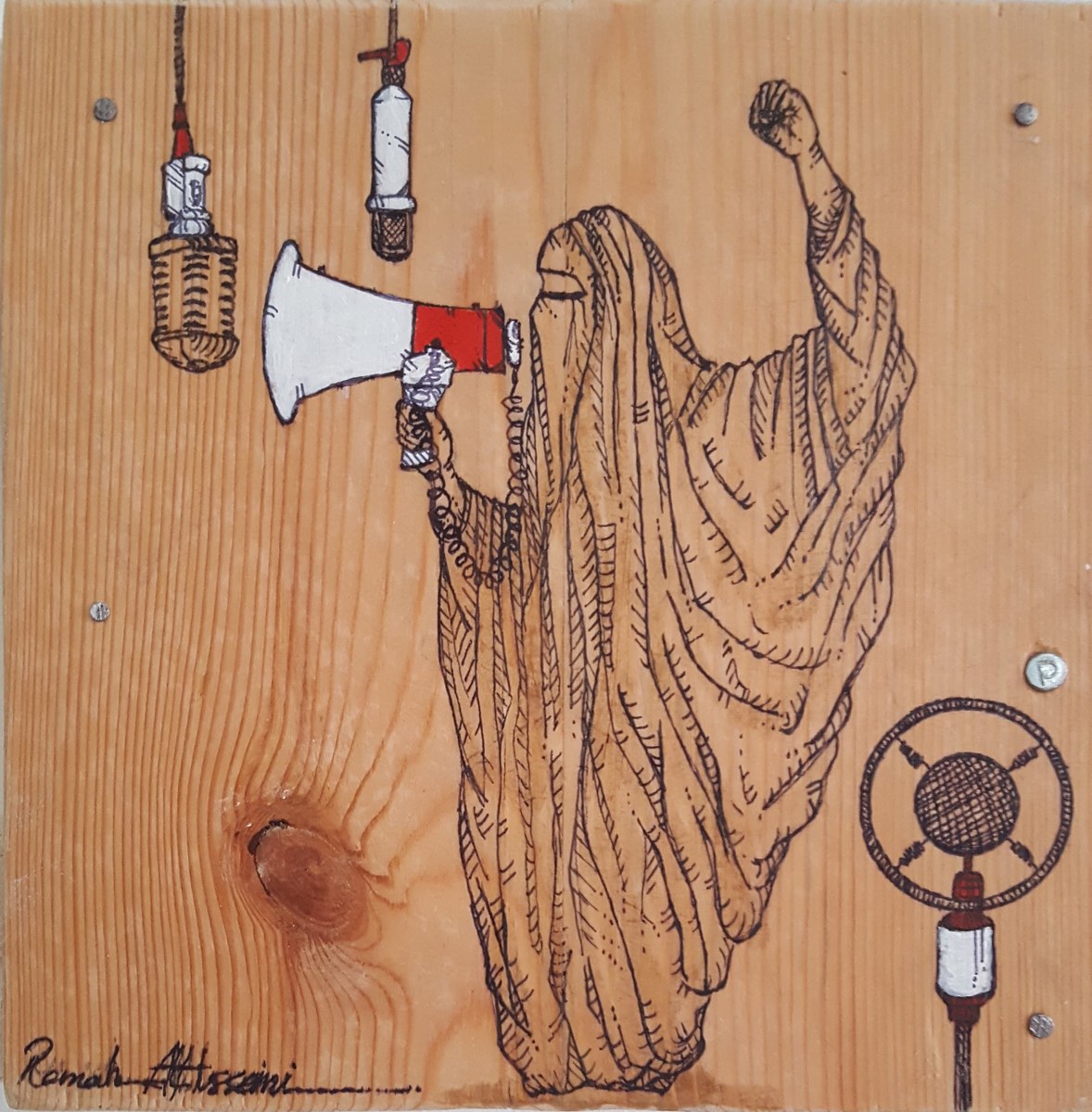

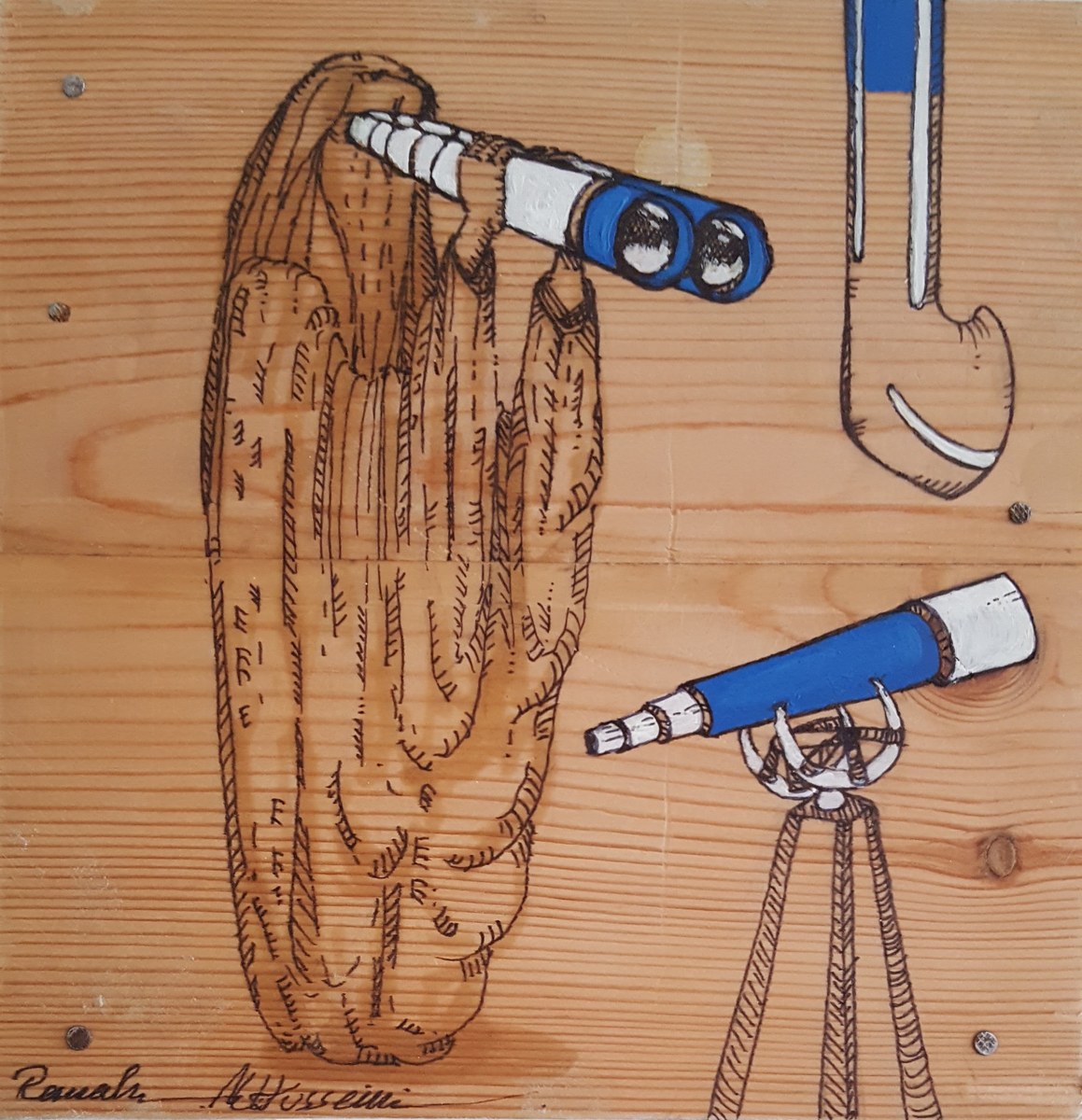
Created in 2016, this trio has been showcased in both Bahrain and Saudi Arabia. It’s a play on the three wise monkeys but turned around, so, rather than ‘See no evil, hear no evil, speak no evil,’ the message is ‘Speak out, listen well and look out.’ The person represents me and is drawn in traditional Saudi dress and painted onto raw wood.
‘Charity Chair’
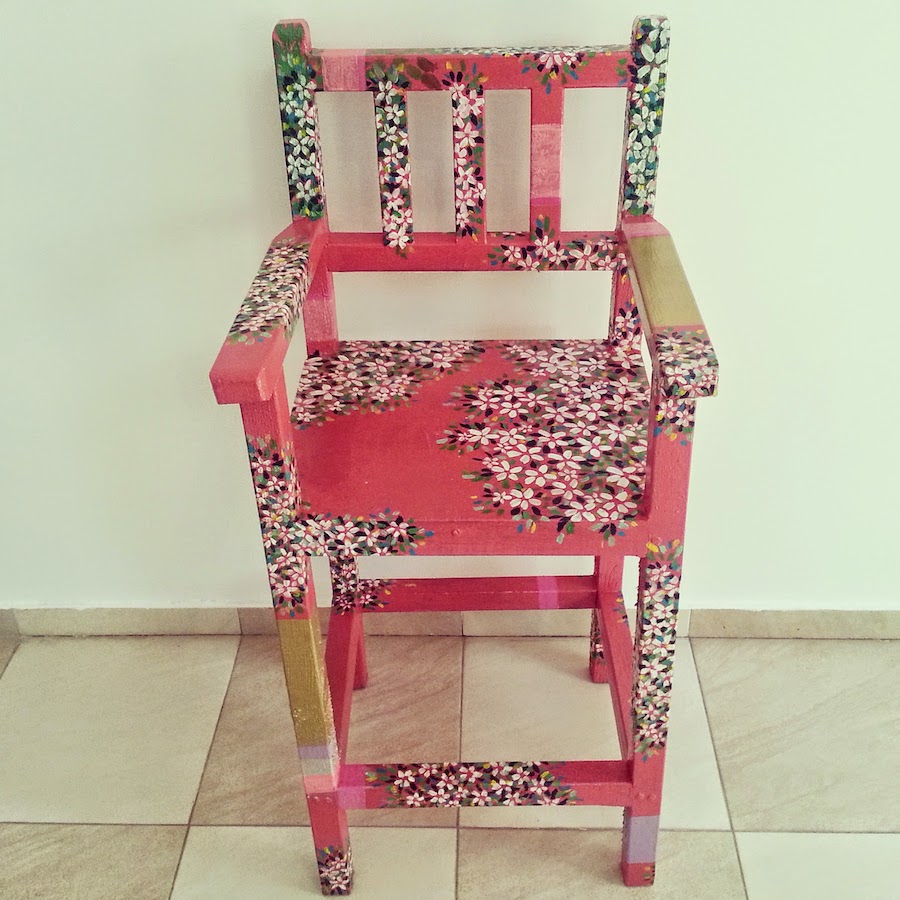
I donated this piece to a Saudi-based charity raising funds for Syria. It was done in 2014, when I was only two or three years out of uni. Coming from a place like Canada, where you have so many mediums and endless creative possibilities, I felt a bit limited as there was little like that here. So, I decided to challenge that restriction by painting on different surfaces. I used the jasmine flower because it is common in Syria as well as in Lebanon and Palestine. Whenever I do things for charity, I try to connect them to the place or people they will, hopefully, benefit.
‘Collaboration with Reem BuQais’
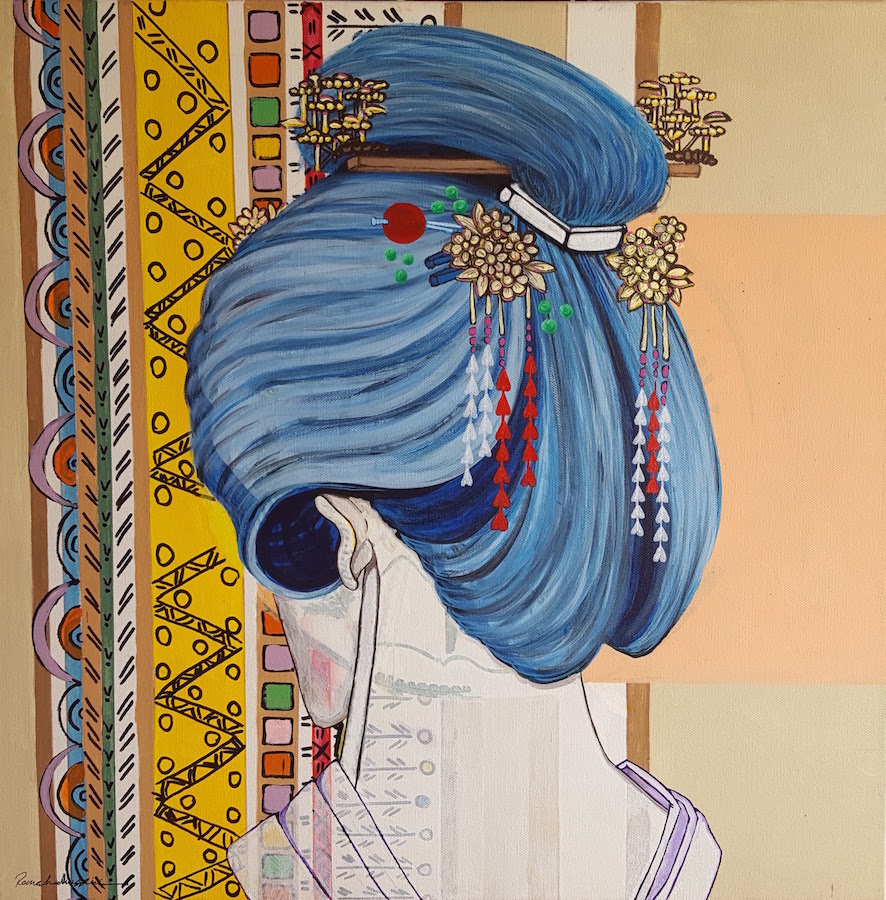
These pieces were created for a collaboration with local fashion designer Reem BuQais. She had just been to Japan and came back wanting to make a tribute — through fashion — celebrating Arab and Japanese culture. She invited me to create pieces that represent that. The hair is traditional Japanese, and the background is traditional Saudi patterns. She took elements from my work and used them in her designs; it’s a nice compliment to see people wearing them.





















